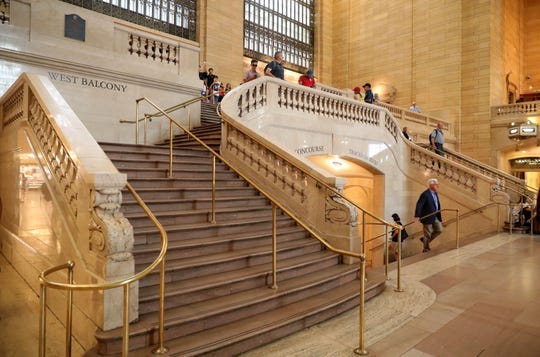article published on May 7, 2020 in No. 11

Cutaneous contact is increasingly feeling like a privilege, for those of us who have the luxury of working remotely. During the current pandemic, it is the repression of our desires—for, say, physical proximity to loved ones—that prevents transmission of the coronavirus. Our abilities for self-management, self-discipline, and self-control are the unknown variables in disease spread forecasting models. To be bodily present in the city, breathing, is to risk infection or transmission. Thus, in self-isolation, our being in the world is relegated to the visual sphere—surfaces without texture, best experienced safely via the screen rather than in person. In response, we are presently rewiring our behavioral impulses to touch and feel. As intimacy intrinsically ties the tactile to the emotional, we lack immediacy with the world outside in the absence of material and textural feedback. Without full use of our haptic senses, affect is muted, if not deadened. At the same time, our notions of touch, proximity, and closeness have been upended in weeks, becoming fraught with anxiety.
For example, seeing a friend safely IRL requires uncommon restraint: the bodily awareness of six-foot distances, measured horizontally and/or vertically, and the persistent wearing of a mask. We now only see each other with exposed faces online. Ironically, in our era of omnipresent facial recognition surveillance, our phones are the only avatars of our bodily presence, since face coverings have been mandated in public. It’s fitting that the English nineteenth-century inventor Michael Faraday, whose experiments contributed to the widespread use of electrical currents, also discovered what is called the Faraday cage, any continuous construct of conductive materials that is able to block electromagnetic radiation. GPS tracking for contact tracing can easily be frustrated by the encasement of our mobile devices in Faraday cages. Analog hacks reveal that the material realm can still trump immaterial attempts at control. Hence, desires as unpredictable vectors in efforts to quell contagion.

Our non-contact society in formation necessitates the rigorous sanitation of all public surfaces. Of note in the 24/7 news coverage of Covid-19 is the call to use copper in hospital environments because of its unique status as the only solid-state material recognized by the EPA as self-disinfecting (along with a number of copper alloys such as brass and bronze). Microbes deposited on copper surfaces are killed upon contact within two hours on average, unlike materials such as stainless steel or plastic, where microbes can remain for two days or longer. The implications for health care settings are promising and have been discussed at length; high touch objects such as door hardware, countertops, and sink handles, to name a few, have the potential to passively resist bacteria. Copper’s contact killing abilities may in fact afford us the possibility to embrace touch again.

Copper’s material properties have been instrumentalized across a number of scales, as cultures throughout history recognized the antiseptic qualities of the material. Copper vessels figured in domestic settings as cups and cookware. The element’s biostatic character enables the safe transport of drinking water through piping. Its conductivity facilitates thermal exchange for HVAC systems and refrigeration. Likewise, its high melting point is not only critical for use in fire sprinkler systems, but also in the casings of bullets. In fact, copper is present in our bodies as part of some organic proteins, mediating electron transfer, and it acts even as a spermicide—copper comprises a non-hormone-based type of IUD (intrauterine device) used for contraception.

Nevertheless, copper comes at an extractive cost. While approximately 35 percent of copper is sourced from recycling, the remainder comes from open-pit mining. The industrial mining complex is not immune to the volatility of world events—last fall saw a drop in Chile’s copper output, in part due to the explosive mass protests of Chileans against income inequality, lack of social safety net, and high cost of living. Like most materials and precious minerals that we rely upon for modern conveniences and due to growing demand, the provenance of copper has yet to reach sustainable levels.
Regardless, copper figures prominently in the invisible infrastructure of our lives. Its efficient conductivity has enabled mass electrification since the Industrial Revolution. Our circuit board wiring relies on copper, and much like our dependence on silicon as a semiconductor, copper was deemed to hit the sweet spot of ample supply, cheap enough price, and low conductor resistance. Ground cuprous oxide, a powdered copper product, is used in marine paints to prevent the growth of organisms. Furthermore, technological advances in textiles have grafted copper nanoparticles onto cotton fibers. Washable and durable, these fabrics could be utilized for reusable personal protective equipment (PPE), rather than the single-use disposables we rely on today. Nano-applications needn’t stop there. Glass technologies pyrolytically fuse metallic oxides to float glass for optical and thermal performance; conceivably copper oxides could also be deposited onto glass for sanitary performance. Any glass surface then could be contact killing: windows, windshields, hospital countertops, goggles, mobile devices.
In the future perhaps we will enrobe ourselves in copper-embedded textiles to move about the city, rather than shelter in place. These copper textiles have the potential to act as a personal Faraday cage, blocking electromagnetic radiation such as cellular signals. Our copper shrouds can potentially provide total sanitation and protect us from both visceral and virtual contagion. Devices wrapped in these materials can go dark, fulfilling our wellness resolutions to unplug from the digital world. In this age of anxiety and paranoia, our bodily and digital selves can be protected with a layer of copper nanoparticle, an immaterial defensive architecture.
.
.
Stephanie Choi is a partner at Daphne.
You can find her @lesssemioticsmorepsychedelics, and www.daphne-arch.com
To receive our e-mails, subscribe at newyork.substack.com. To receive our issues, subscribe at nyra.nyc/subscribe
Or follow the Review @nyreviewofarchitecture




